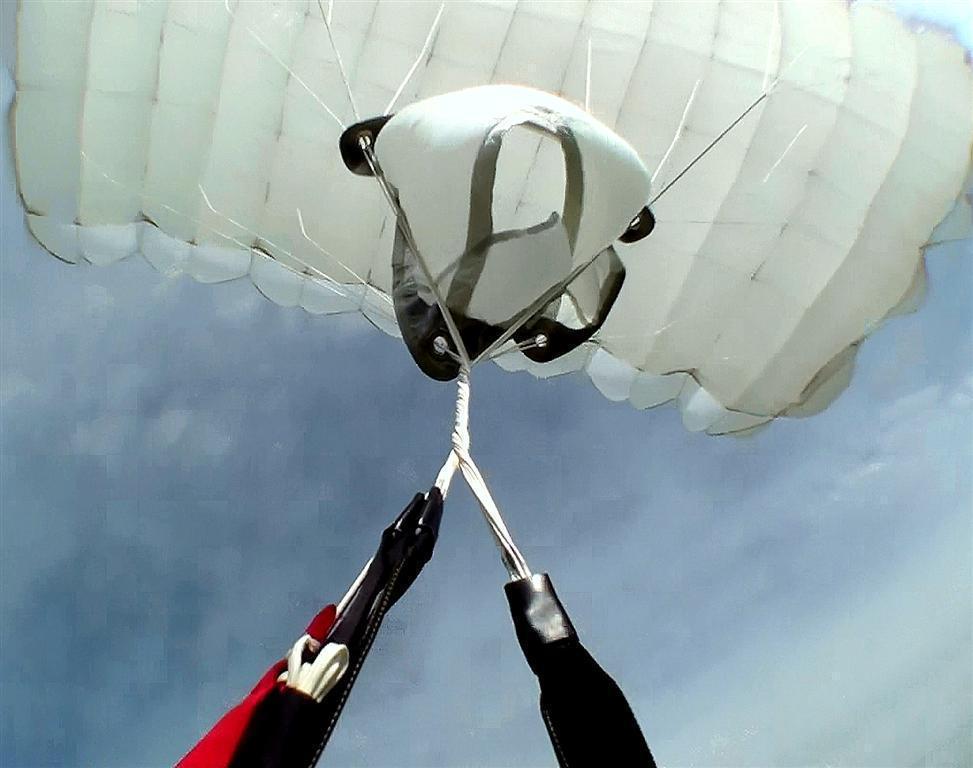Leaderboard
-
in all areas
- All areas
- Adverts
- Advert Questions
- Advert Reviews
- Videos
- Video Comments
- Blog Entries
- Blog Comments
- Images
- Image Comments
- Image Reviews
- Albums
- Album Comments
- Album Reviews
- Files
- File Comments
- File Reviews
- Dropzones
- Dropzone Comments
- Dropzone Reviews
- Gear
- Gear Comments
- Gear Reviews
- Articles
- Article Comments
- Article Reviews
- Fatalities
- Fatality Comments
- Fatality Reviews
- Stolen items
- Stolen item Comments
- Stolen item Reviews
- Records
- Record Comments
- Record Reviews
- Help Files
- Help File Comments
- Help File Reviews
- Events
- Event Comments
- Event Reviews
- Posts
- Status Updates
- Status Replies
-
Custom Date
-
All time
January 20 2016 - August 14 2025
-
Year
August 14 2024 - August 14 2025
-
Month
July 14 2025 - August 14 2025
-
Week
August 7 2025 - August 14 2025
-
Today
August 14 2025
-
Custom Date
03/03/2021 - 03/03/2021
-
All time
Popular Content
Showing content with the highest reputation on 03/03/2021 in all areas
-
3 pointsNot particularly concerned about myself. More concerned about being seen to support arseholes.
-
2 points
-
1 pointAnd here's one you will like: https://www.dailymail.co.uk/health/article-2525235/Alcohol-boosts-immune-makes-vaccines-effective.html
-
1 point
-
1 pointIt is irrelevant to NORJAK as the plane did not have the optional emergency release system.. but the safety cards state to remove a cover then pull off a flange.. That placard was on the outside of 727-100's, but the US commercial version systems were updated.. The placard can only be found on old images, private or foreign 727-100's.. About six moths after the Hick's placard was found a second one was found.. 99% same aircraft,, I assume they mean a 727. These decals fall off the exterior.
-
1 pointAll the world's indeed a stage And we are merely players Performers and portrayers Each each other's audience Outside a gilded cage.
-
1 point
-
1 pointIDK, I had about 24 oz or so of high gravity beer which is mostly water and I didn't feel so great.
-
1 pointI hear you if no one else does. I can only guess what I'd have done to get my parents the med's they needed. Living with cancers and neuropathy is nothing anyone wants and a hand full of pills to get through the day is no great reward. There simply aren't any real pain management solutions for some afflictions. I truly hope you catch a break on this.
-
1 point
-
1 pointSince you’re bringing back to life a 13 year old post, the AC you posted (105.2d) wasn’t applicable in 2008, the correct answer in 2008 would have been 120 days, as taken from AC 105.2c. The 180 day change came in May 2011, when AC105.2c was cancelled and AC105.2d came out. ✌️
-
1 pointLook she inspired me to finally look up the definition of sophistry (from an earlier post) and the irony overdose almost killed me.
-
1 pointI moved on to random non-sequiturs. It made no discernable impact on the conversation quality.
-
1 point
-
1 point
-
1 point(Approximate jump numbers) 1-20: Manta 288 (0.65 W/L) 21-200: Sabre 190 (0.98 W/L) 201-500: Stiletto 150 (1.2 W/L) 501-700: Stiletto 135 (1.3 W/L) 701-1100: Stiletto 120 (1.47 - 1.56 W/L) Interspersed with above: Parafoil 282 (circa 200 jumps), various other canopies (circa 100 jumps) BASE: Fox 200 (circa 300 jumps additional to above numbers) -----16 year break----- 1101-1101: Solo 230 (0.9 W/L) 1102-1102: Solo 210 (0.98 W/L) 1103-1106: Solo 190 (1.07 W/L) 1107-1110: Sabre 170 (1.2 W/L) 1111-1121: Safire 159 (1.25 W/L) 1122-1134: Sabre 150 (1.32 W/L) 1135-1144: Sabre 135 (1.47 W/L) I have a Crossfire 3 129 (1.53 W/L) to move to in about 50-100 jumps depending on how I feel.
-
1 pointPlease give me a real reason as to why my name matters to you? Who I am and what I asked does not change any answer or intensity as to these questions, and as a paying USPA member, you should also be asking these questions.
-
1 pointInterestingly enough, I heard a talk on the placebo effect in general yesterday; in the COVID vaccine trials, about 30% of people had an adverse effect (besides sore arm) to the placebo. Fewer to the second shot, which given that the actual shot has a higher incidence of adverse effect, seems to indicate that the second shot does have a noticeable effect in some people. Got my Pfizer shot one on Saturday; already have my follow-up scheduled for shot 2. I'll be volunteering at our local senior center as an intake person after that. Seems only right, since it's a 10-minute stroll. Wendy P.
-
1 pointGood data. Doing further research -- right now 0.41 Euro per L is pretty cheap, partially due to covid. The savings may not be as much fuel wise as expected if your Caravan only burns 60-70L for a full load to 13500 feet. Canadian/American jump tickets are closer to approximately 25-30 dollars per jump (Perris sells them between $25-$29 depending on quantity and discounts). But avgas is also cheaper per liter in North America (1gal = ~3.8L). Now searching down for prices, I'm seeing this. It's pretty clear (excluding maintenance savings) -- that 2020 fuel prices doesn't justify electric very well -- fuel is unusually cheap due to collapse of demand. That is mitigatable: - You only need to charge intermittently, rather than continuously - A ground-scale lithium power bank can help downscale the power utility connection. Suitable power banks are getting cheaper. - Local generation is also viable too (hangertop solar, etc) especially as these are getting incentivized/cheaper. - Some airports already have good supplies. Not all dropzones, but some of them already have the necessary supply. One would only need 1 candidate dropzone to be the first. You only need a few EV-vehicle-sizes' worth of battery to surge-output into intermittently charging a skydiving plane by perhaps X% (one jump's worth) using only a ~25% depth-of-discharge (the benchmark of shallow discharge needed for a decade(s) lifetime ground battery so you don't have to replace it after three years like a worn smartphone battery). One need only two or three true-EV-car-equivalents worth of ground lithium batteries (low few hundred kWh), to significantly downsize the necessary utility connection by 50% or more, depending on the charge:idle ratio of the electric airplane charger. Also, small airports can frequently have significant power supplies already, so cherrypicking the right airport can justify the business case automatically. It might not be for every airport (at first). It's not like a cheap electric vehicle -- an airplane is a much more expensive vehicle where a conversion makes sense sooner than for cars. In another industry, my local city (Toronto)'s regional transit agency, Metrolinx, decided to replace a gaspeaker plant plan with a lithium battery farm as the backup/UPS to power an upcoming electric subway called Eglinton Crosstown LRT. The subway was already under construction when they actually cancelled the gas plant and replaced it with a battery farm. Clearly, the economics suddenly clicked thanks to the scorching price drops. Now, to smaller-cost items such as airplane, which are durable assets that can last decades, conversions are always on the table versus re-enginings. Conversion cost has to be weighed against engine replacement too. There may come a point where conversion becomes economically feasible, and I expect that to be feasible by 2030s . This, I have some data (some confirmed, some unconfirmed), and this is where I need to ask for confirmations. A very fast lift to 13500ft at near max weight consume approximately ~50 kilowatt-hours for one electric airplane I heard about (not sure if it was a small one or eCaravan sized one) -- need to confirm as I obviously cannot parrot unconfirmed numbers in a Parachutist article. Also, thermodynamic efficiency of an electric airplane and without gears, is more than twice as high as a turbine. Electric motors routinely exceed 90% efficiency, while petrol motors are under 50% even before the gear loss (if any gears are used). So horsepower for horsepower, a lot less horsepower to reach altitude is needed -- one can throttle back the horsepower more for an electric to maintain a brisk climb. In some cases, efficiency apparently exceeds 3x for some power settings for the same amount of thrust. The best ones are a good Garrett engine at 50% efficiency, but many aged turbines are only 30% efficiency. I don't know what the PT engine thermodynamic efficiency is, but it's a lot less than a fresh new Garrett. Also the turbines is one-third less efficient at full jump altitude (give or take) than at ground. Electric motors don't degrade as it doesn't need the oxygen to burn fuel, only degradation from less air pressure. Also, over their lifetimes electric motors don't degrade quite like a turbine gradually does, and fuel mixtures can easily go suboptimal by maintenance issue more easily (i.e. 10% less efficient, here and there). And you have the additional gear inefficiency. When all of this combines up -- I wouldn't be surprised to see the ballpark of 1/3rd to 1/4th efficiency of a Magnix at full jump altitude is quite realistic. It's far less -- not sure if it closer to 1/2 as much or 1/5th as much -- but it's quite massively far less. They certainly remotely didn't need a significant fraction of 750hp of a Magnix to climb fast. Some questions to be added to interview... Now, optimizing for minimum-kWh-per-jump which takes a few minutes longer to climb than max-horsepower. Surprisingly less power needed if you're optimizing for the electric sweet spot from what I hear. Don't forget electric motors can remain far more efficient at nearly all speeds/torques, whereas a turbine has a sweet spot. So you have more range of adjustment -- pilot can adjust flaps a bit and rev up/down a bit -- to find a different sweet spot electrically than with a turbine, since you no longer need to optimize for the turbine's sweet spot to get the maximum actual climb power possible for a given propeller power. Instead, you're optimizing to the sweet spot of watts-per-altitude-gain, milking your electric motor's ginormous near-full-range sweet spot -- so pilot only need to focus on optimizing for aerodynamics. Which is still briskly fast even below maximum throttle; Now, we know 1 liter diesel is equivalent to 10 kilowatt-hours in theoretical efficiency. Real world is only 30% and that's before a lot of losses that aren't applicable to electric -- there's additional losses -- gearing loss, altitude loss, being away from sweet spot, etc. This is also consistent with the fact that a 50 liter gas tank only needs 1/5th to 1/10th the battery size for a similar range -- in a gas car versus electric car. Let's split the middle for automobiles -- a 75 kilowatt-hour EV battery versus a 50 liter gas tank (~500 watt-hours theoretical) for about the same driving range from full-to-empty. The new Teslas 4680s are enabling 350 miles on a mere 82 kWh (source). That's similar to the range of my 50 liter gas tank in my current car, so that gives you the automotive-industry comparision numbers -- 50 liters is theoretically almost 500 kilowatts of electricity in 100% pure joules laws-of-physics. But we don't get that efficiency out of fuel because of conversion losses. Now you're getting the efficiency-split idea, and battery-sizing idea. So seems 50 kilowatt-hour jump altitude is within a conceivable stone's throw. I might be off by double, but not by that much more. Assuming 50kWh, to consume only 33% per lift, requires a 150 kilowatt-hours battery. Let's be a bit more generous, and assume it's closer to 75 kilowatt-hours per lift, and we tighten the margin to say, 35%, we'll need a 200 kWh battery. Earlier 200 kWh battery of a decade ago -- at yesterday's power density 200Wh/kg weighs 1000kg, about 2000 pounds. A full Cessna caravan fuel load is ~2224 pounds (source). Now, the 4680 is already almost 400 watt-hour per kilogram. (380 Wh/kg, source) So today, we now already have a required battery half the weight of a full Caravan fuel load for a single jump load at 33% SoC discharge. But that assumes 50 kWh/lift. But if we're off by a lot and the power use is closer to 100 kWh/lift, we have to upsize the battery quite a bit, or wait for kWh to become better, then we'll need to wait longer for numbers to make sense. Nontheless, the real jump altitude numbers are well within the battery sizing ballparks & mass envelopes achievable. That said, it is true it is deadweight that eats into jumper capacity. So first conversion may have fewer jumpers, until battery efficiency improves. Also, it excludes potential regen recapture from the typical fast dive by a jump pilot (Let's say ~10% -- since the trainer regen recaptured up to 13%) but let's ignore that for simplicity. And energy consumption to 13500ft may go down too (for a dedicated airframe instead of a re-enginiing/conversion). Work is being done to keep increasing capacity; including 1000 wH/kg (NASA.gov 1440Wh/kg research as one example). Yes, we need the battery safety measures (shock absorption cage etc), which lowers the power density numbers somewhat. But it really truly seems the numbers are going to be able to check out well before the end of the decade even if we only improve a little bit more (to allow the battery safety structure weights). Now, a projection example -- imagine the numbers are correct or conservative and it's only 40 kWh per jump cycle after all said and done, and we want a 25% SoC per jump, then we only need 160 kWh battery for a 25% discharge. The remaining capacity (120 kWh) is more than enough for level flight of 30 minutes, we're simply shallow-SoC simply for battery-longevity consideration (a battery that lasts more than a decade). And let's say at 500 wH/kg by 2030 including battery-safety structures (crush zones, cooling, etc) -- 320kg battery or 700 pounds -- that battery now becomes between one-quarter to one-third a full Caravan tank (2224lbs). If we settle for 33% SoC cycling, the battery can be downsized even further, but I'm sure we rather see a 25% SoC for one jump just simply because of sheer safety margin -- for cold weather, for battery wear, etc. Then again, these numbers may be wildly optimistic. Nontheless it seems the venn diagrams certainly overlap into feasibility, even for the less promising numbers. I would like to supply a list of questions to Magnix CEO early next year for some Parachutist article, as even I make mistakes, but the battery capacity numbers definitely seems to be checking out for a "one-jump-load-sized" battery. Please supply additional "hard questions" that I could use to formulate interview questions to ePlane industry contacts (Magnix's CEO has offered to be interviewed for Parachutist) -- I welcome the hard questions. Even if that means downsizing some numbers. But obviously, it's clearly all looking promising.
-
Newsletter








.thumb.jpg.4bb795e2eaf21b8b300039a5e1ec7f92.jpg)

